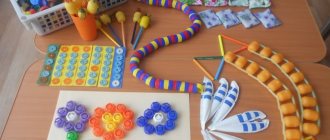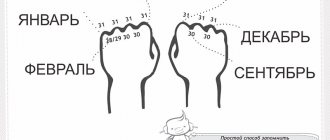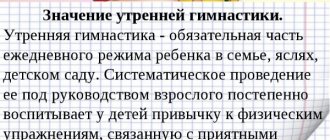Finger and gesture games
Why develop fine motor skills, and how is it related to speech development? The fact is that speech formation depends on the coordinated work of both hemispheres of the brain. The brain centers responsible for speech and fine motor skills are located in close proximity to each other. Therefore, the development of fine motor skills also stimulates the development of speech skills.
If there are no anatomical defects in the structure of the speech apparatus, by the age of 2-2.5 years the baby should be able to combine two or three words to express his thoughts or desires.
Poems that encourage the pronunciation of sounds and words
This is a very exciting game with a child who already understands adult speech well. That is, he has a sufficient passive vocabulary and developed auditory attention. For example, a parent talks about some animal, and the child must voice this animal:
- Parent: “Cows are grazing in the meadow.”
- Child: “Moo, moo.”
- Parent: “A puppy came to visit us.”
- Child: “Woof-woof.”
At first, the baby simply repeats after his mother, and then he will independently pronounce the necessary sounds. You can buy the book “Chattering Poems,” which contains poems that encourage children to imitate the sounds of the world and be talkative.
Reading books
The purpose of educational children's games is to encourage children to pronounce sounds and words, and reading books together helps with this. Buy books with bright pictures so that they attract and interest the child. Point to the drawing and ask: “Who is this?” At the beginning, you will have to answer your own question, but over time the child will begin to name the animals or objects depicted in the book.
List of books for children 1-2 years old:
- S. Marshak “Poems and fairy tales for the little ones”;
- A. Barto “Toys”;
- E. Karganova “Both loudly and in your ear”;
- Collection of poems and fairy tales;
- A big book of fairy tales and poems for the little ones.
List of educational books for children 1-2 years old:
- My first book;
- Baby's first textbook;
- others similar.
These children's books contain pictures depicting parts of clothing, dishes and other household items. The child learns to recognize and name objects and actions
Viewing Doman cards or other material that expands a child’s horizons
Modern psychologists support the early development of children literally from the cradle. One of the early development systems is the Doman technique. There are conflicting opinions about it, but everyone has their own view of this process. For example, some parents believe that it is necessary to show their child real objects, and not those shown in the picture. But modern research has convincingly proven that child development is impossible without brain development. But the brain does not see the difference between virtual and real. Therefore, he perceives the object depicted in the picture in the same way as the real one.
The approach to the Doman technique must be reasonable and creative at the same time. There is no need to show children all the cards in a row: choose those that are consistent with his current state and understanding. For example, after introducing your child to an image on a card, reinforce this information with a real object - let him touch a table or something else. This is due to the fact that unclaimed information is forgotten very quickly. If you showed a kangaroo on the card, bring your baby to the zoo. Let him see a real size kangaroo and get to know the animal better. Your goal is to consolidate the material covered.
On a note! Before exploring any topic with your children, make sure they are ready to receive the information.
Therefore, it is necessary to show the kids on cards exactly those objects that he can see at home or on the street, in a store or in a hospital. The same applies to animals and birds, flowers and trees. You can show your child a palm tree a hundred times, but it will remain something incomprehensible to him: in our country, palm trees can only be seen on the Black Sea coast. But a banana is real for a baby: you can buy it in a store.
Speech game with kids 10. What types of pots are there?
The idea of a speech game is Anastasia Sh.
Consider different pots - large and small, real and toy. What are they?
Use the different characteristics of the pots as you read the poem. For example, if you draw sly winking eyes and a smiling mouth on a toy saucepan, then this saucepan is a sly one. Maybe the saucepan is a baby (the smallest saucepan in your house). And when you play with her, you change the words like this: “Castle - the baby cooked porridge for us...”. Maybe a good saucepan - what to call it? The pan is hot! The kid can choose which pan he will cook porridge and name its characteristics.
When reading a poem while playing, you can also replace the dish - porridge can be replaced with soup, compote, buckwheat, omelette. (“The big pan cooked an omelette,” “The little one cooked a pan of mashed potatoes for us,” and so on, depending on the specific situation in which the baby is now).
And of course, cover the saucepan with a handkerchief during “cooking”.
Breathing exercises
You can start doing these exercises with your child at the age of 1.5 years (plus or minus a couple of months).
Loud quiet. You need to imitate some animal, for example, a bear or a cat. The big bear/cat makes the sounds loudly, and the little bear/kitten makes the sounds quietly. Animals can be changed to make it interesting for the child to participate in this game.
Fairy. If a child is familiar with fairy tales and understands who wizards are, you can play magic with him. Ask him to wave a “magic wand” (any pencil) and pronounce the sounds “ma, mo, mu, we,” imitating a magic spell.
Wheel and pump. Boys love this game, especially if they already understand a little about cars. First you need to draw a wheel with your hands (clasp the fingers of both hands and spin them). Then pretend that the tire is deflated (slowly place your hands on your shoulders - right to left, left to right) and pronounce the sound “shhhhh”.
After this, you need to ask the baby to pump up the tire. We imitate the appropriate movements (as if we were holding a pump in our hands) and accompany our actions with the sound “sssssss”. If dad or mom drives a car, the child is well acquainted with these manipulations. If the child has no idea about wheels and a pump, we do not perform the exercise.
Lumberjack is a developmental exercise for boys. We simulate chopping wood. We make the sound “uh” when the imaginary ax is lowered onto the log.
Speech game with kids 10. Guess by touch, taste, smell
The game was invented by Irina N. for her baby.
We introduce the baby to objects (vegetables, fruits). Before the game, you will need to prepare several natural vegetables and fruits for your baby (wash them thoroughly). And these same vegetables and fruits cut into pieces.
How to play this speech game:
A tricky saucepan. She cooked porridge for us. Of what? (thoughtfully) (joyfully) Juicy carrots! Where's the carrot? The baby looks for a carrot among 2-3 objects, finds it and gives it to his mother. Let him try a piece of carrot for taste and smell.
A tricky saucepan. She cooked porridge for us. Of what? (with cunning) (surprised) From allspice? Where's the parsley? Oh, how it smells! (The baby finds parsley among the items prepared for the game and gives it to him, and the mother smells it and lets the baby smell it)
What else? (look at the baby in surprise, let him tell you) What do you want porridge (soup...), mushroom or apple? (affectionately) From mushrooms or apples? (seriously) For example, a child wants to add apples to a saucepan.
Let's make apple compote.
The pan is a tricky one.
She made compote for us.
Of what? From apples! Where is our apple? Find an apple (the child finds an apple among the objects) Here is an apple! Is it big or small? Green like a cucumber or yellow like a chicken?








